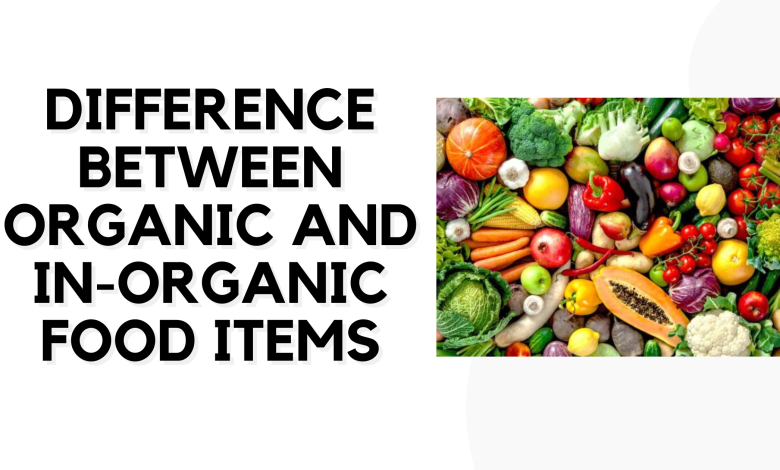Difference between organic and In-organic food items
Indian Grocery

Organic foods are grown without using artificial herbicides, pesticides, and fertilizers. And primarily organic foods are fresh for a short period of time that is prepared without using preservatives to increase longer shelf life. Organic livestock is part of organic foods, meats, eggs, and dairy products are obtained without giving them antibiotics and chemical-based foods, any growth hormones, and GMO-free food. Fresh vegetables & fruits, meats, dairy products, and frozen products are certain organic foods examples. With the rising quality-driven product production. The rising health-conscious population across the country coupled with the growing international demands for Indian products is leading to creating an opportunity for the Wholesale Indian grocery suppliers to register massive growth.
Benefits of the organic foods
The Rising health-conscious population across the country is leading to creating a massive demand for healthy products. Which promotes good consumer health. Let’s have a look below at the organic foods benefits.
- Organic foods are fresh as it no longer contains any sort of preservatives
- Organic food production is environment friendly that tends to reduce soil erosion, increase soil fertility, and reduce pollution.
- Organic foods contain essential nutrients in the required amount.
- Organic foods are produced without using chemical substances.
Inorganic foods are produced by using synthetic fertilizers, pesticides, and herbicides. Preservatives are commonly used with the purpose to extend the product’s shelf life. The rising processed food consumption in the country along with the growing population rapidly. This leads to creating a massive product demand and further an increased consumption rate. To cater a large consumers’ needs, synthetic and chemically based substances are being used highly, which boosts and doubled the product production rate across the globe. In the united states of America, during the farming production process, a recommended amount of chemicals-based substances or synthetic compounds can be used.
Processed foods, conventionally driven organic foods, including, inorganic obtained meat, frozen foods, and dairy products. These are certain inorganic foods examples. That is highly consumed across the globe.
Benefits of the inorganic foods
The rising inorganic food consumption in today’s generation is common. Owing to the rising opening of processed food stores and high production is leading to attracting countries’ youth. Children are the primary consumers of processed foods across the country. Though inorganic foods are considered harmful to our health, the high consumption rate is gaining traction. here Below we are mentioning certain inorganic foods benefits,
- Inorganic foods are cheaper than organic foods
- The use of synthetic substances in inorganic foods tends to increase product shelf life by preventing contaminations.
- Synthetic substances that are used are considered less harmful compared to organic foods’ natural toxins.
Conclusion: Both organic and inorganic food is sold massively in the market. As the health-conscious population is the top consumer of organic foods. Whereas, inorganic food consumption, includes processed food such as bakery items, bread, sausage, cakes, and biscuits. With the rising production level in the country is leading to increasing an large consumer base not domestically but internationally as well. Therefore, it is leading to rising growth in Merchant Exporter from India. The rising health-conscious population across the country is leading to generating a high demand for organic food items. Coupled with inorganic food is also in high demand owing to the widening establishment of bakeries ad supermarket stores across the region.



